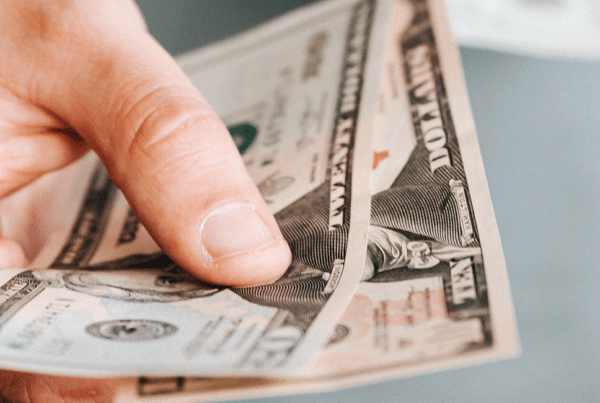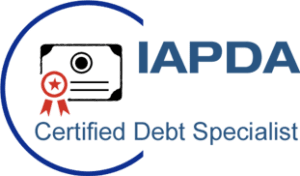
Unfortunately, there is no debt meter.
There is no mechanism in place that lets you know your credit card debt has become unmanageable. Your credit card issuers certainly aren’t going to warn you; they rely on that high interest debt, and the more you take on, the more they make.
Instead, it’s up to you to monitor and manage your own unsecured debt. There is nothing about your credit card or other unsecured debt that can’t be managed by you. The general problem is lack of time, lack of money to repay the debt, or in many cases, a bit of laziness.
Below we’ll talk about 10 indicators that you’re reaching your limit. When it comes to credit card debt, it’s very difficult to reverse a delinquent account. In addition to your regular payment, you could be facing late fees, higher interest, or other penalties. The key is to avoid the disaster before it strikes.
How many of these common indicators are you experiencing now?
Your cards are maxed out or above the credit limit.
Maxed out credit cards are usually a sign of over-extension. You may be paying just the minimum payment each month resulting in excessive interest. The maxed out cards are taking their toll on your credit, too. Credit utilization accounts for 23% to 30% of your score; a maxed out credit card is considered 100% utilization. Usually 100% would be considered a good score! Not in this case. You’re looking for a utilization of 25-35% – this shows you’re managing your debt rather than piling it up.
You can’t afford to pay anything except the minimum payment.
The minimum payment on your credit card is intended to keep you in debt. This minimum payment is usually calculated one of two ways; 2-3% of the full balance, or 1% of the balance, plus interest and fees.
For example: You have a credit card with a $9,000 balance at 26% interest, and your monthly minimum payment is $240. Continuing like this, your credit card will take about 6.5 years to pay off. And, you will have paid a total of $18,960 – more than double your original balance. Don’t believe me? Here’s the calculator used to generate these numbers. Interest is designed to keep you in debt, and is maximized when you only make the minimum monthly payment.
You’re late or missing payments.
Late payments often come with late fees or other penalties resulting in additional money owed. If you’re late on your payment, these additional fees can put you over the edge. Missing a payment is obviously an even worse situation… Do to compounding, missing a single payment can lead to a perpetual late payment, that includes fees and interest. Now your minimum payment is affecting the principle even less, as part of it is being used to pay late fees.
Do you see how the design of the credit card system is meant to keep you in debt; constantly making minimum payments just to stay afloat? In reality, the majority of your payments are going straight to the creditor in the form of interest.
You’re paying your credit card debt with other types of debt.
Sometimes it seems like a good idea to pay your credit card payments with another form of debt. This could be another credit card, a personal loan, or even a line of equity from your home. This quickly becomes a slippery slope, as you’re robbing Peter to pay Paul, as the saying goes. Shifting your debt may seem like you’re “paying” because you’re satisfying the payment to that creditor, but you’re not progressing in any way. While you’ve solved the immediate crisis of meeting your payment, you’ve added that payment to another form of debt. You will essentially pay interest twice on this purchase.
You’re using credit cards for necessities and everyday purchases.
One of the easiest signs to spot is how you pay for groceries or other necessities. These items should be part of your disposable income budget, and when you find yourself reaching for the credit card, you may be in trouble. Now, this shouldn’t be confused with smart credit card usage for common goods. Many people choose to use a single credit card for gas all month, then pay the balance in full each month. This is an excellent way to build credit and avoid paying interest, if you keep up with your full balance payoffs of course.
Your credit score starts dropping and your applications denied.
If you find yourself having a tough time getting credit, whether it be credit cards, auto loans, home loans, etc. – check your credit report. When you fall behind on payments, especially if this has compounded, your score will drop rather quickly. On time payments are the largest factor on your credit report. you can check your credit score for free though multiple reputable companies. We recommend – CreditKarma.com, CreditSesame.com, and Experian.com.
You’re hiding your debt.
Recently we’ve spoken on the subject of hiding financials from your partner or spouse. This is far more common than many people think. Finances are a difficult subject, and can be a source of friction for a relationship.
When it comes to hiding finances, we found most people are hiding debt. Whether it’s from embarrassment, concern over response, feelings of inadequacy, etc., there’s a wide array of reasons people choose to lie about their debt to their partner.
You can’t afford to save money because you have too much credit card debt.
Even consumers on the tightest of budgets can find a way to save. A common misconception is that you need to be saving x% of your income or it’s not worth it… Any amount you can save is worth it, and compounds over time. When you’re in a position to save a fixed percentage of your income every month, do it. If you’re one of many Americans that lives paycheck to paycheck, it may be a bit harder.
If you find yourself in a position that you have absolutely no money to save after your bills are paid each month, it’s time for a change. This is a serious indicator of that your credit card debt has outgrown your income.
You worry about how you’re going to pay off your credit card debt.
Debt creeps into every aspect of our lives. If you find yourself worrying, losing sleep, or have any other life altering repercussions, it’s time to take action. A credit card should be a safety net, or a well managed credit builder. When used haphazardly, the debt quickly becomes panic inducing.
This is when you start to worry. The worry begins because you’ve realized you’re stuck with this debt, unless you can make large payments to the principle, or pay it off completely. This is especially true if you pay attention to the fine print on your monthly statement. While it may be small, all statements show you how much of your payment is going to interest. It’s good to know, but look at your own risk.
Ok, my credit card debt is out of control. Now what?
The first step is realizing it. If you read the indicators above and feel familiar with the scenarios, it’s in your best interest to make a plan. There are many options for debt relief, but when it comes to credit cards and other unsecured debt, no one beats our team of negotiators.
If you’re ready to take the first step to freedom from credit card debt, schedule your free debt consultation now. Our certified consultants will review your personal situation, and let you know your options.
Your partner in debt relief,
Consumer First Financial





